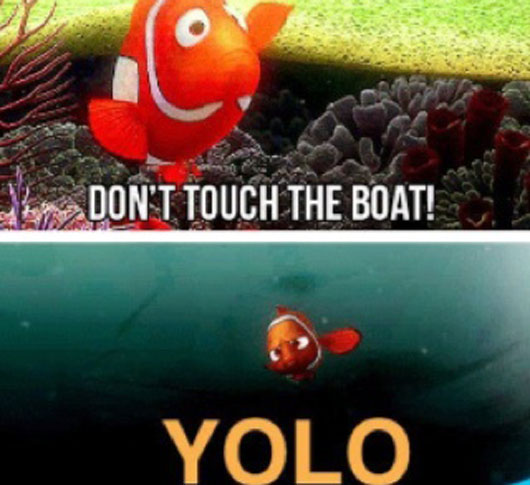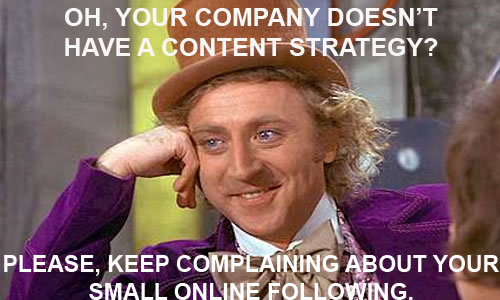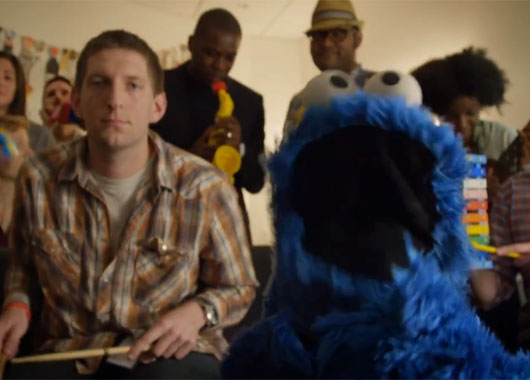Author’s note: This post will be the first in a series of posts about meme marketing. Yes, of course cats will be involved. Enjoy!
There was a time when I thought that memes were nothing but photos with funny captions.
I’ll be honest, that time was not too long ago. That being said, I took it upon myself to do some investigating in order to find out what really makes something a “meme.” It was also a good excuse to look at hilarious pictures and videos online at work.
Don’t judge me, it was all in the name of research.
The first question I asked myself was, “What is a meme?” Call me “Captain Obvious,” but I figured it was a good place to start.
What is a Meme?
Evolutionary biologist and author Richard Dawkins first coined the word “meme” in his 1976 book The Selfish Gene.
Dawkins wrote:
‘The new soup is the soup of human culture. We need a name for the new replicator, a noun which conveys the idea of a unit of cultural transmission, or a unit of imitation. ’Mimeme’ comes from a suitable Greek root, but I want a monosyllable that sounds a bit like ‘gene.’ I hope my classicist friends will forgive me if I abbreviate mimeme to meme. If it is any consolation, it could alternatively be thought of as being related to ‘memory,’ or to the French word même. It should be pronounced to rhyme with ‘cream.’
A meme is a “unit of cultural transmission” and is essentially an idea that mutates and spreads like a virus. In the same vein, an “Internet meme” is an idea that mutates and spreads over the Internet.
If I organized my questions in the order of obviousness (which I did) then you should already know what my next question was.
What can be considered a meme?
This is where the real fun began. As I alluded to earlier a meme is more than a photo with a funny caption. A meme can be an image, video clip, phrase, website, image, joke, or parody.
Here’s the catch: Just because an idea exists doesn’t automatically make it a meme. Something cannot be considered a meme until another variation of it has been shared. That picture of your kid at the beach with sand in his hand is adorable, but it won’t be considered a meme until someone else creates a shareable variation of it.
What’s a post about memes without some examples? Below are three memes that have made a big splash within the last year:
1. Carly Rae Jepsen’s “Call Me Maybe”: Everyone from Cookie Monster to the U.S. Olympic Swimming Team has created a parody of this song making it one of the year’s most popular memes.
2. You Only Live Once (YOLO): While the phrase “You Only Live Once” or “YOLO” dates back to 2004 its popularity grew significantly when rapper Drake released his song “The Motto” late in 2011. Since then people have been excusing their reckless decisions by screaming out “YOLO.” Thanks, Drake.

3. Ridiculously Photogenic Guy (RPG): Zeddie Little officially became a web phenom earlier this year after being photographed running in the 2012 Cooper River Bridge Run. His ridiculously photogenic face gained notoriety after being posted on Reddit. After that, countless parodies of the picture have been shared all over the Internet.
Take a look at RPG and judge for yourself how photogenic he is: http://knowyourmeme.com/memes/ridiculously-photogenic-guy-zeddie-little
Here’s a parody via Mashable: http://8.mshcdn.com/wp-content/uploads/2012/04/RPG.jpg

Now, it’s time for the moment you’ve all been waiting for. No, not the cats….it’s time for the meme marketing section of our program.
Why Memes Work for Marketing
Memes are an excellent marketing tool. Meme marketing campaigns can easily capture the attention of the 21st century consumer. Here’s why:
1. Memes are a great source of visual content. We’ve learned from the popularity of infographics and Pinterest that people love visuals. Visual content marketing allows brands to convey messages more succinctly because with a visual you have less time to really capture a consumer’s attention.
You literally only have seconds to capture someone’s attention before they move to the next thing fighting for their gaze.
2. Memes are easy to share. The whole point of a meme is that they are sharable which means that people will want to showoff your campaign to their social networks. A meme marketing campaign can help introduce your brand to millions of potential customers across the globe.
3. Memes create community. Memes become popular because people find ways to identify with its messaging. The popularity of “Sh*t [insert subject here] Say” videos are a prime example of this. An effective meme marketing campaign is more than humorous, or visually captivating…it’s relatable.
4. The cost is up to you. You can “memejack” by jumping on an already viral image or video by putting your own spin on it, or you create your own meme marketing campaign from scratch. If well-executed can put your company on the map. Either way a meme marketing campaign is a fairly inexpensive way to promote your brand.
I could go on to communicate the effectiveness of meme marketing, but then I wouldn’t have a series of posts for you, now would I?
In the next post in this series on meme marketing I will share tips on how to create an effective meme marketing campaign.
Until then, let’s chat: What are some of your favorite memes?
I’ll see you in the comments section.

